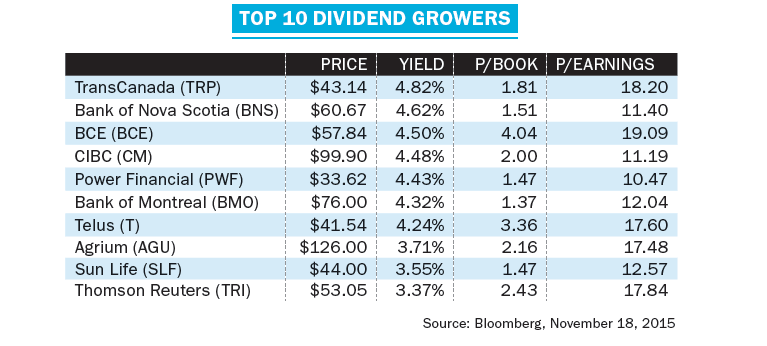A simple way to get exposure to dividend stocks
A low-fee strategy to add more dividends to your portfolio
Advertisement
A low-fee strategy to add more dividends to your portfolio
 If you don’t mind building your own portfolio, you can improve it by buying equal amounts of each stock and then opting for a smart, and somewhat relaxed, approach to rebalancing. Take the Vanguard fund’s portfolio as an example. One might buy similar dollar amounts of each of the 93 stocks (or perhaps a smaller number like the top 10 or 20) with a view to sitting on them.
Dividends can then be used to top up smaller holdings as prices move around over the years. Similarly, withdrawals and contributions to the portfolio can be used to slowly rebalance it. The effort won’t result in a precisely equally-weighted portfolio, but it should be close enough for most investors to obtain a modest performance boost over the long term.
Those with smaller portfolios can begin with a small collection of dividend payers and then slowly add stocks over the course of many years. To help, I’ve provided a starter list of 10 Dividend Growers in the accompanying table.
The Dividend Growers currently have an average yield of 4.2%. They are all large profitable dividend payers, which have grown their dividends in recent times and trade for less than 20 times earnings. I limited the list to three banks, two telecom firms and two insurance companies in an effort to boost its diversification by industry.
If you want more dividend stock ideas, check out my MoneySense blog. It regularly tracks the major high-yielding dividend payers. With a bit of luck, the income provided by good dividend stocks will help investors feast with family and friends for many years to come.
If you don’t mind building your own portfolio, you can improve it by buying equal amounts of each stock and then opting for a smart, and somewhat relaxed, approach to rebalancing. Take the Vanguard fund’s portfolio as an example. One might buy similar dollar amounts of each of the 93 stocks (or perhaps a smaller number like the top 10 or 20) with a view to sitting on them.
Dividends can then be used to top up smaller holdings as prices move around over the years. Similarly, withdrawals and contributions to the portfolio can be used to slowly rebalance it. The effort won’t result in a precisely equally-weighted portfolio, but it should be close enough for most investors to obtain a modest performance boost over the long term.
Those with smaller portfolios can begin with a small collection of dividend payers and then slowly add stocks over the course of many years. To help, I’ve provided a starter list of 10 Dividend Growers in the accompanying table.
The Dividend Growers currently have an average yield of 4.2%. They are all large profitable dividend payers, which have grown their dividends in recent times and trade for less than 20 times earnings. I limited the list to three banks, two telecom firms and two insurance companies in an effort to boost its diversification by industry.
If you want more dividend stock ideas, check out my MoneySense blog. It regularly tracks the major high-yielding dividend payers. With a bit of luck, the income provided by good dividend stocks will help investors feast with family and friends for many years to come.
Share this article Share on Facebook Share on Twitter Share on Linkedin Share on Reddit Share on Email